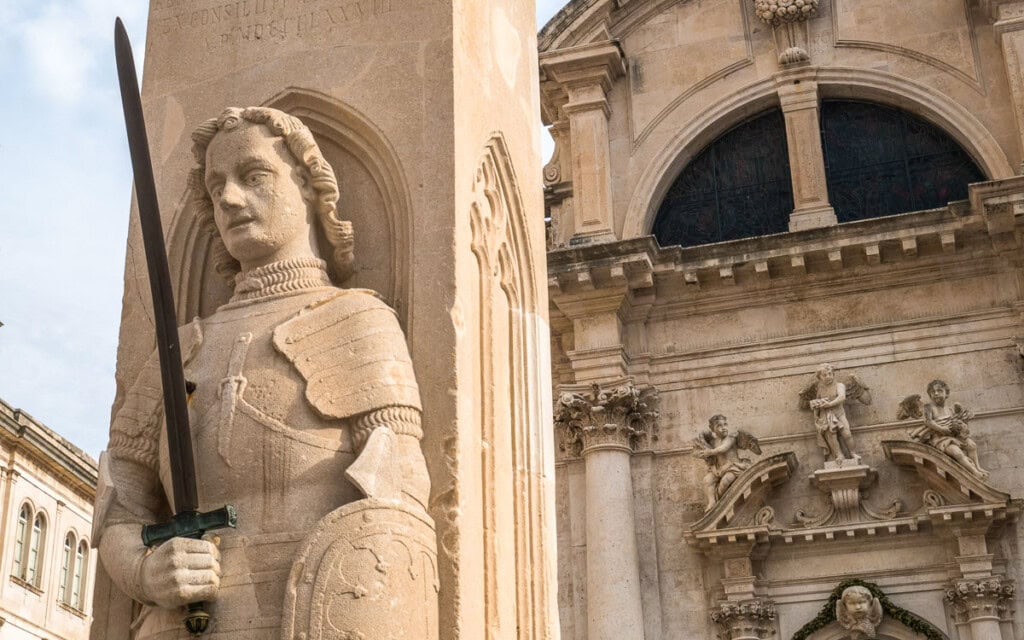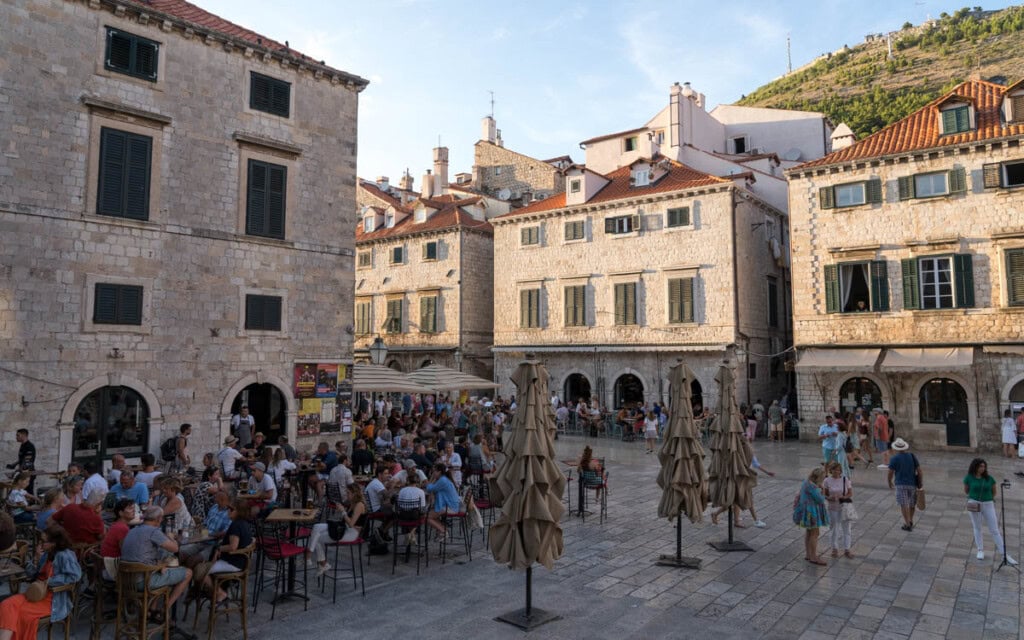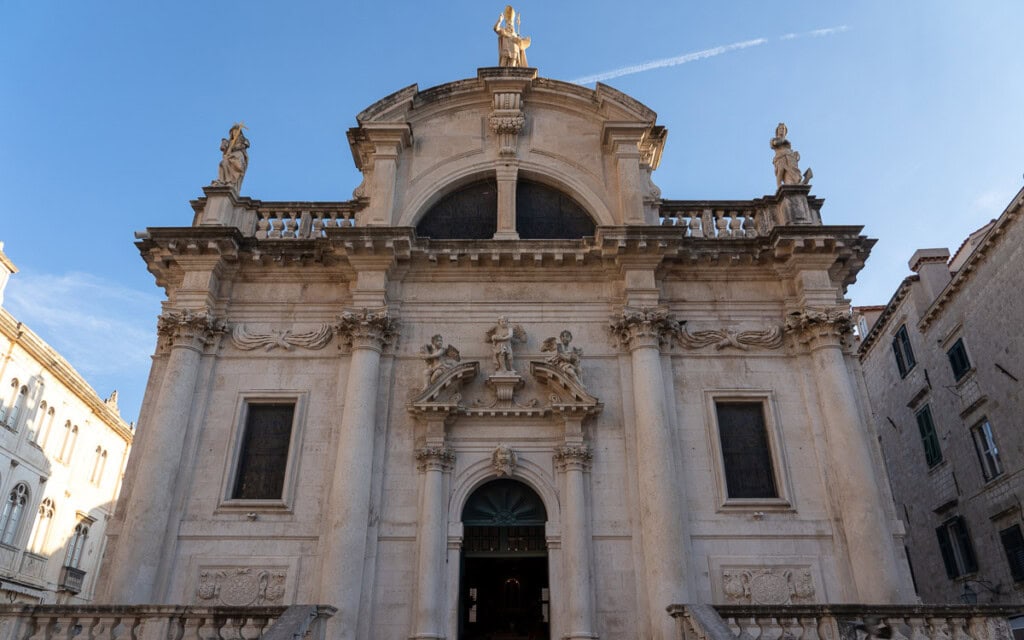
Ploče Gate is a 14th-century Romanesque-style gate that serves as the entrance to Dubrovnik’s Old Town and its main street, Stradun. While Pile Gate is the main entrance on the western side, Ploče Gate, also known as Vrata od Ploča, once played a key role in the city’s defenses and today serves as the main entry point into the Old Town from the east.
Although the gate has evolved over the centuries, its origins date back to the late 1300s and early 1400s. The gate featured an inner and outer section connected by a stone bridge and a wooden drawbridge when originally built. At night, guards raised the drawbridge as part of the town’s defenses.
Renovations and Defensive Upgrades
Over the years, the gate has been renovated and expanded in several phases as new defensive strategies emerged.
Architect and local builder Paskoje Miličević Mihov designed the two bridges connecting the gate to Revelin Fortress in the 15th century. Revelin Fortress protected the gate and reinforced the city’s eastern side. Mihov also designed the bridges of Pile Gate, which are similar in design.
In 1628, local builder Mihajlo Hranjac oversaw the renovation of the outer gate, further enhancing its fortifications. He also worked on the construction of the City Harbour.
Saint Blaise, the Patron Saint of Dubrovnik
Though less ornate than the Pile Gate, Ploče Gate also features a statue of Saint Blaise. Positioned above the inner gate, Saint Blaise, the patron saint of Dubrovnik, holds a model of the city in his hands. The statue symbolizes his role as Dubrovnik’s protector.
Ploče Gate Today
Today, Ploče Gate is still one of the main entrances into Old Town Dubrovnik, used by thousands of locals and tourists daily. It leads directly to Stradun, the main street of Dubrovnik.
Ploče Gate Information
Hours
24 hours
Admission
Free
Map
Nearby Sights
Small Onofrio's Fountain

Located at the eastern end of Stradun, off Luža Square, is the historic Small Onofrio's Fountain, an ornately decorated octagonal fountain. The small fountain, often overlooked by tourists, played an essential role in the history of Dubrovnik's water supply. Italian architect Onofrio della Cava designed and constructed the fountain between 1440 and 1442.
Orlando's Column

In the center of Luža Square, on the eastern end of Stradun, is Orlando's Column, a historic stone monument dating back to 1418. Carved into the statue is a heroic medieval knight who defended Dubrovnik from invaders. In 1418, Bonino di Jacopo, an Italian master sculptor from Milan, built the column with the help of local sculptor Antun Dubrovčanin.
Luža Square

Luža Square, at the eastern end of Stradun, is one of Dubrovnik's busiest and most historically significant central squares. It has been an important meeting point for centuries and is home to some of the city's most significant landmarks, making it a must-visit spot in the Old Town. Since the Middle Ages, Luža Square has been a central meeting place for citizens of the Republic of Ragusa, present-day Dubrovnik.
Church of St. Blaise

The Church of St. Blaise, located on the eastern end of Stradun, is one of the most iconic and famous landmarks in Dubrovnik, Croatia. The church, dedicated to Saint Blaise, the patron saint of Dubrovnik, dates back to the early 18th century. A Romanesque church stood at this location from the 14th century until the middle of the 17th century.